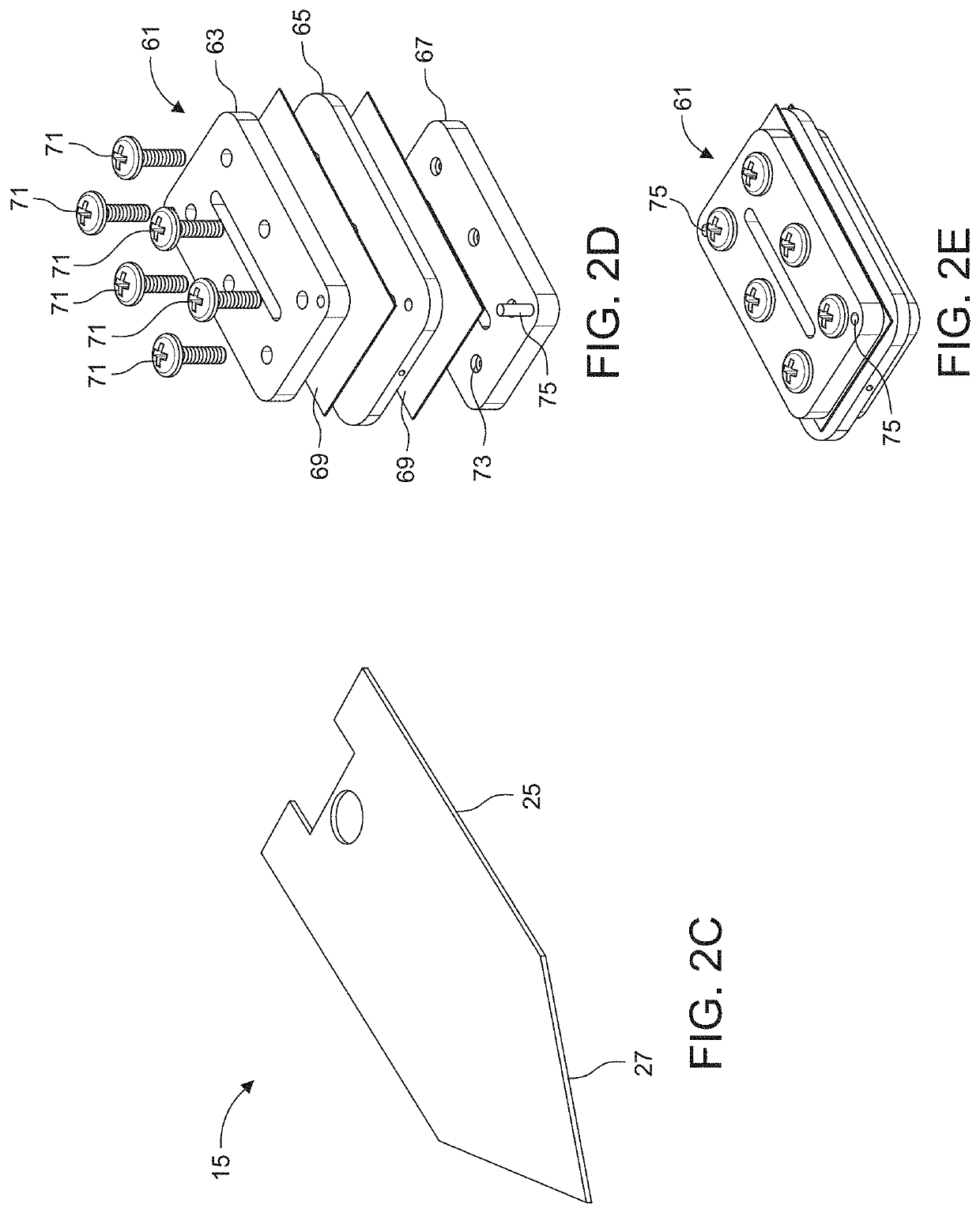Method and Apparatus for High Throughput High Efficiency Transfection of Cells
a high efficiency, cell technology, applied in biochemistry apparatus and processes, fluid controllers, laboratory glassware, etc., can solve the problems of affecting cell viability, affecting cell viability, and requiring a lot of touch-intensive labor, so as to simplify the overall layout and achieve high throughput
- Summary
- Abstract
- Description
- Claims
- Application Information
AI Technical Summary
Benefits of technology
Problems solved by technology
Method used
Image
Examples
example
[0159]Experiments were conducted using an assembly such as described above with reference to FIGS. 6-13.
[0160]In more detail, the assembly was constructed by laminating a stack of machined thin polymer layers together. Sheets of polyetherimide (PEI) were then machined either on a conventional CNC milling machine or an ultraviolet laser cutter. Each layer is backed with a layer of adhesive.
[0161]To demonstrate proof of concept, the arrangement used was simplified and did not include a buffer exchange function. Rather, a microfluidic hydrodynamic sheath flow configuration was established by directing a low-conductivity electroporation buffer containing primary human T cells and mCherry-encoding mRNA (CleanCap mCherry mRNA, TriLink Biotechnologies, San Diego, Calif.) through the central inlet (inlet 46c in FIG. 3). High-conductivity culture buffer was supplied through the two side inlets (46a, 46b in FIG. 3).
[0162]The cells and media entered and exited the microchannel through ports at...
PUM
| Property | Measurement | Unit |
|---|---|---|
| Temperature | aaaaa | aaaaa |
| Structure | aaaaa | aaaaa |
| Efficiency | aaaaa | aaaaa |
Abstract
Description
Claims
Application Information
 Login to View More
Login to View More - R&D
- Intellectual Property
- Life Sciences
- Materials
- Tech Scout
- Unparalleled Data Quality
- Higher Quality Content
- 60% Fewer Hallucinations
Browse by: Latest US Patents, China's latest patents, Technical Efficacy Thesaurus, Application Domain, Technology Topic, Popular Technical Reports.
© 2025 PatSnap. All rights reserved.Legal|Privacy policy|Modern Slavery Act Transparency Statement|Sitemap|About US| Contact US: help@patsnap.com



